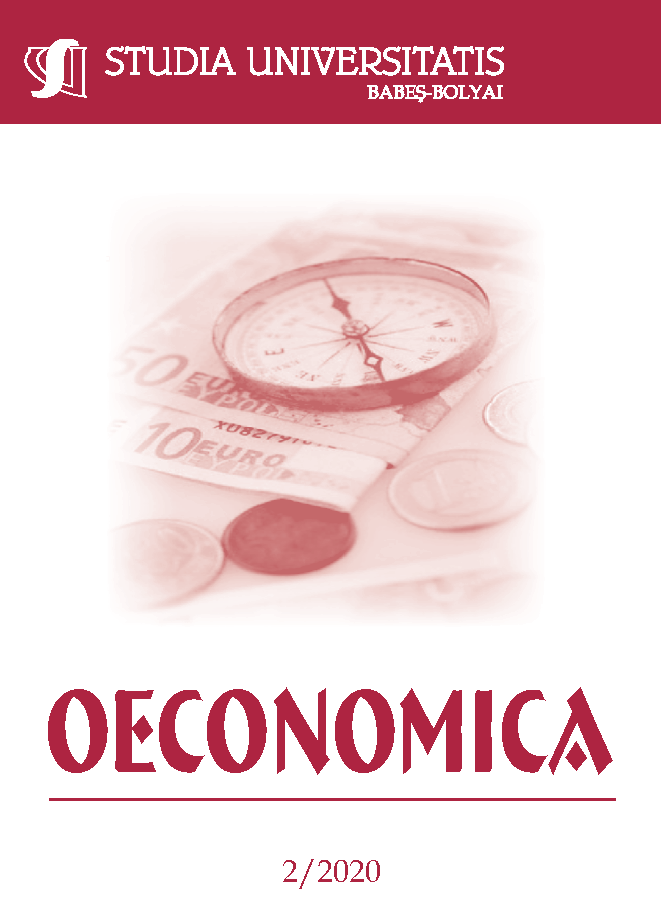INVOLUNTARY UNEMPLOYMENT IN A NEOCLASSICAL MODEL
DOI:
https://doi.org/10.2478/subboec-2020-0007Keywords:
involuntary unemployment, indivisible labor supply, two or three-periods overlapping generations model, monopolistic competition, increasing returns to scale.Abstract
We show the existence of involuntary unemployment without assuming wage rigidity using a neoclassical model of consumption and production. We consider a case of indivisible labor supply and increasing returns to scale under monopolistic competition. We derive involuntary unemployment by considering utility maximization of consumers and profit maximization of firms in an overlapping generations (OLG) model with two or three generations. In a two-periods OLG model it is possible that a reduction of the nominal wage rate reduces unemployment. However, if we consider a three-periods OLG model including a childhood period, a reduction of the nominal wage rate does not necessarily reduce unemployment.
JEL classification: E12, E24.
References
Hansen, G. D. (1985) Indivisible Labor and Business Cycle, Journal of Monetary Economics, 16, 309-327.
Harvey, John T. (2016) An Introduction to Post Keynesian Economics: Involuntary Unemployment with Perfectly Flexible Wages and Prices. The American Economist, 61, 140–156.
Kalecki, M. (1944) The classical stationary state, Acomment, Economic Journal,54, 131-132.
Lavoie, M. (2001)Efficiency Wages in Kaleckian Models of Employment. Journal of Post Keynesian Economics, 23, 449–464.
McDonald, I. M., Solow, R. M. (1981) Wage Barganing and Employment. American Economic Review, 71, 896–908.
Mankiw, N.G. (1988) Imperfect Competition and the Keynesian Cross. Economic Letters, 26, 7-13.
Otaki, M. (2007) The Dynamically Extended Keynesian Cross and the Welfare-Improving Fiscal Policy. Economics Letters, 96, 23–29.
Otaki, M. (2009) A Welfare Economics Foundation for the Full-Employment Policy. Economics Letters, 102, 1–3.
Otaki, M. (2011) Fundamentals of the Theory of Money and Employment (Kahei-Koyo Riron no Kiso (in Japanese). Keiso Shobo.
Otaki, M. (2012) The Aggregation problem in employmnet theory. DBJ Discussion Paper Series, No. 1105.
Otaki, M. (2015) Keynsian Economics and Price Theory: Re-orientation of a Theory of Monetary Economy, Springer.
Otaki, M. (2016) Keynes’s General Theory Reconsidered in the Context of the Japanese Economy, Springer.
Pigou, A.C. (1943)The classical stationary state, Economic Journal, 53:343-351.
Reinhorn, L.G. (1998) Imperfect Competition, the Keynesian Cross, and Optimal Fiscal Policy. Economic Letters, 58, 331–337.
Startz, R. (1989) Monopolistic Competition as a Foundation for Keynesian Macroeconomic Models. Quarterly Journal of Economics, 104, 737–752.
Umada, T. (1997) On the Existence of Involuntary Unemployment (hi-jihatsuteki- shitsugyo no sonzai ni tsuite (in japanese)). Yamaguchi Keizaigaku Zasshi, 45, 6, 61–73.
Downloads
Published
How to Cite
Issue
Section
License
Copyright (c) 2020 Studia Universitatis Babeș-Bolyai Oeconomica

This work is licensed under a Creative Commons Attribution-NonCommercial-NoDerivatives 4.0 International License.






